
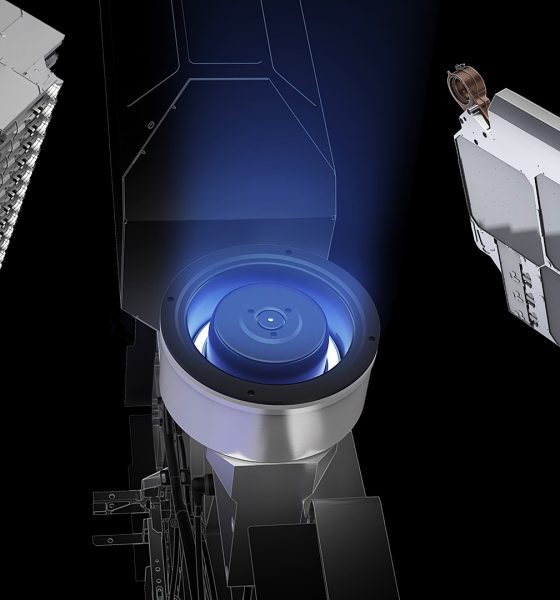
News
SpaceX Starlink launches to debut rideshare capabilities next month
According to SpaceX and customer Planet, the company will start offering Starlink rideshare launch opportunities as early as next month, opening up space for other companies, space agencies, and individuals to get their payloads into space.
SpaceX’s decision to co-opt its own Starlink missions as a vehicle for rideshare payloads is perhaps one of the most interesting strategic moves in the smallsat launch ecosystem in awhile. Announced in early-August 2019, SpaceX’s Smallsat Rideshare Program effectively marked the company’s entrance into the burgeoning smallsat launch services industry. Rather than the launch industry proper, the services industry focuses on finding ways to put tiny satellites on rockets that would normally be far too large to serve as a practical solution. By finding multiple customers and wrangling with their different schedules, spacecraft, and requirements, dozens of smallsats can be launched in such a way that it’s actually worth a large launch provider’s focus.
In the past, SpaceX famously worked with Spaceflight to launch the SSO-A mission in December 2018, using all of a Falcon 9 rocket’s performance to place 64 small satellites in orbit. After many, many delays and numerous planned customers still missing the launch, both Spaceflight and SpaceX came away with the conclusion that a fully dedicated smallsat launch at the scale of Falcon 9 was simply not a practical approach to the problem. Instead, spreading the ~120 satellites originally manifested on SSO-A over 3-6 smaller missions would be far more sustainable for all parties involved. With SpaceX’s Starlink rideshare strategy, the company may have done exactly that.
Each weighing about 115 kg (~250 lb) each and standing roughly the same size as a large mini-fridge, Planet has broken the news that three of its SkySat imaging satellites will fly on SpaceX’s ninth dedicated Starlink launch. Known as Starlink-8 in reference to it being the eighth launch of finalized v1.0 satellites, the mission is scheduled to launch no earlier than June, likely 3-4 weeks after SpaceX’s 8th Starlink launch (NET May 17).
After Starlink-8, Planet will include another three SkySats on an unspecified Starlink mission, also scheduled to launch sometime in Q3. Once complete, the earth imaging company’s fleet of high-resolution (~0.5m/px) observation satellites will be 21 strong,
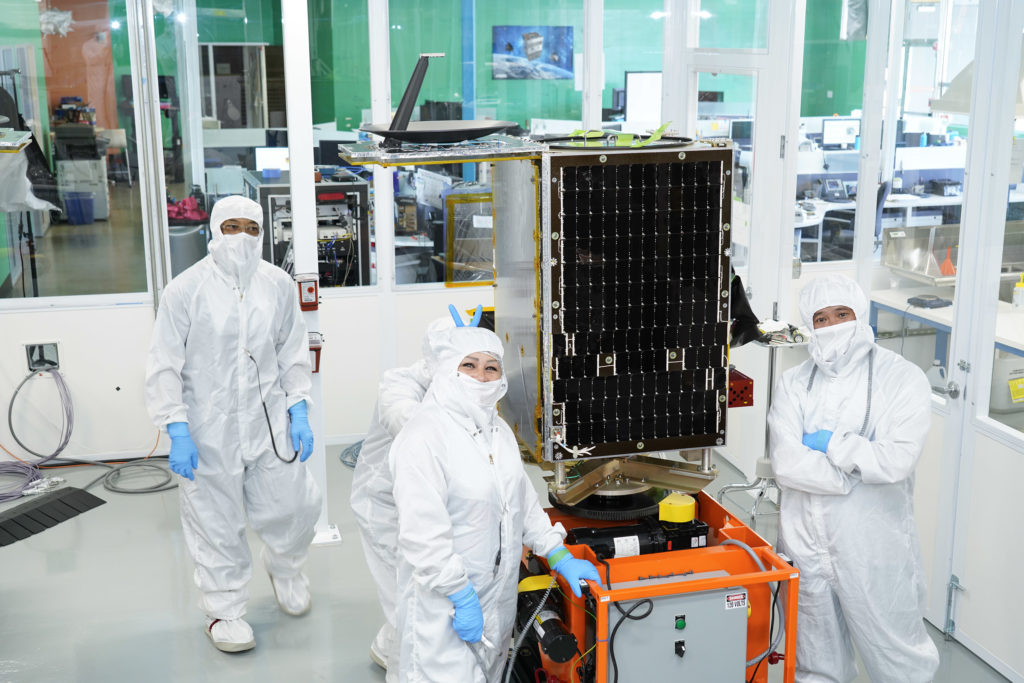
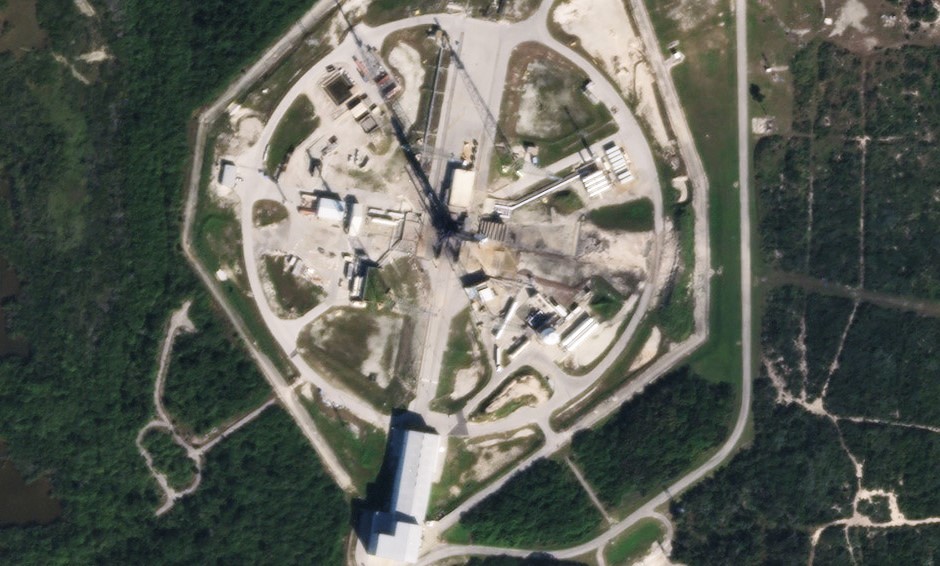
Until SpaceX or its rideshare customers choose to release photos or offer up details, it remains unclear how the company’s Starlink rideshares will work from a technical perspective. Thanks to SpaceX’s extremely unique method of stacking and deploying each batch of 60 Starlink satellites, there will be a combination of challenges and benefits to grapple with. Because of Starlink’s flat, rectangular satellite design, a lot of space inside the Falcon payload fairing they occupy is left empty.
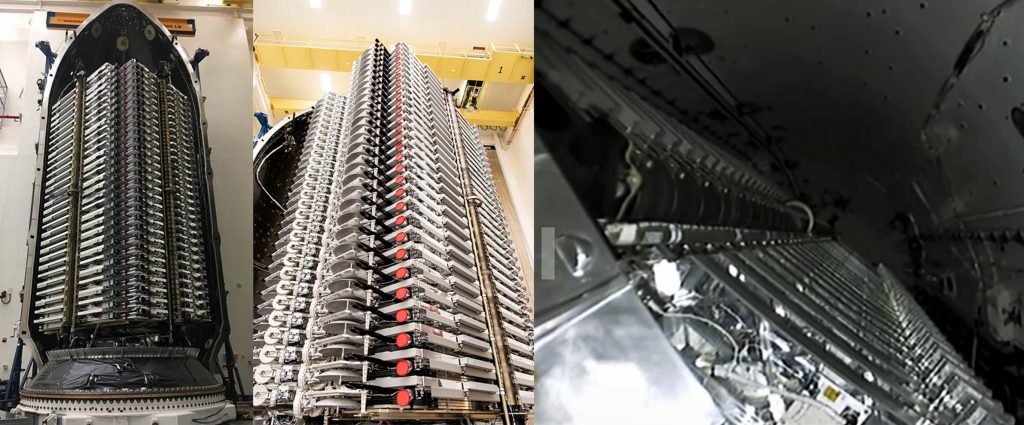
There’s a slight possibility that smaller satellites and their deployers could fit in the triangular gaps left at the bottom of Starlink stacks, but it’s unlikely that Planet’s relatively large (on the scale of smallsats) SkySats would fit in the constrained space. That leaves the large conical section left unused at the top of each Starlink-dedicated payload fairing. Given that SpaceX spins up Falcon 9’s upper stage and releases Starlink satellites like a deck of giant ~260 kg (~570 lb) cards, it’s highly unlikely that rideshare passengers could be deployed after the main Starlink deployment event.
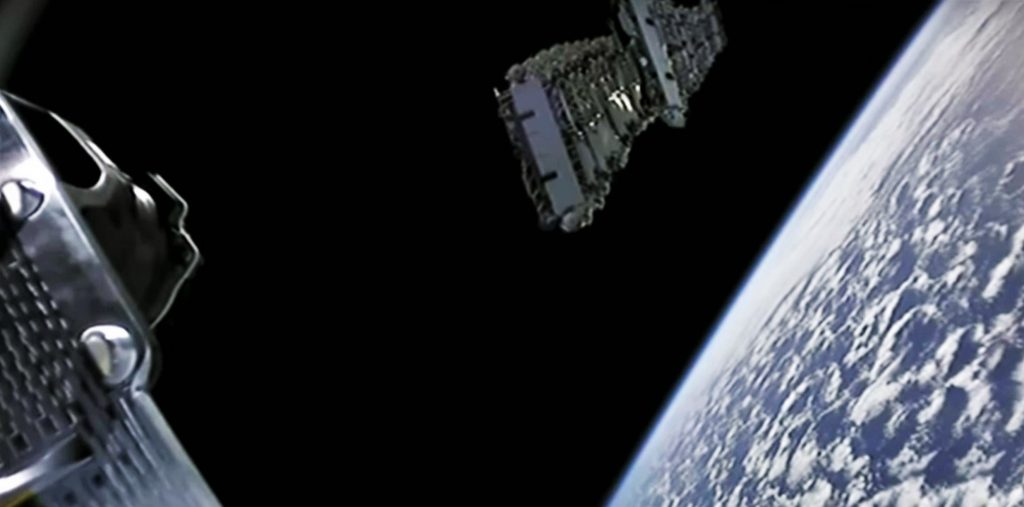
That leaves some kind of solution that mounts rideshare payloads on top of the stack of satellites. The most likely solution would involve somehow attaching a satellite deployment mechanism to the tensioning rods that hold the Starlink stack together and are ejected to release all 60 spacecraft at once. If that solution is possible, Falcon 9 could deploy rideshare payloads, spin up, discard the structural rods and deployers in one go, and eject all 60 Starlink satellites with having to tweak any of the spacecraft or change launch operations much at all. Regardless, it will be interesting to see how SpaceX has solved its unique deployment problem.

Elon Musk
Elon Musk just said some crazy stuff about the Tesla Roadster

Elon Musk appeared on the Moonshots podcast with Peter Diamandis today to discuss AGI, U.S. vs. China, Tesla, and some other interesting topics, but there was some discussion about the upcoming unveiling of the Roadster, the company’s electric supercar that will arrive several years after it was initially slated for release.
Musk made some pretty amazing claims about the Roadster; we already know it is supposed to be lightning-fast and could even hover, if Tesla gets everything to happen the way it wants to. However, the car has some pretty crazy capabilities, some of which have not even been revealed.
On the podcast, Musk said:
“This is not a…safety is not the main goal. If you buy a Ferrari, safety is not the number one goal. I say, if safety is your number one goal, do not buy the Roadster…We’ll aspire not to kill anyone in this car. It’ll be the best of the last of the human-driven cars. The best of the last.”
🚨 Elon on the Roadster unveiling, scheduled for April 1:
— TESLARATI (@Teslarati) January 6, 2026
Musk makes a good point: people who buy expensive sports cars with ridiculous top speeds and acceleration rates do not buy them to be safe. They hope they are safe in case of an emergency or crash, but safety is not at the forefront of their thoughts, because nobody buys a car thinking they’ll crash it.
The Roadster is truly going to push the limits and capabilities of passenger vehicles; there’s no doubt about that. Tesla plans to show off the new version car for the first time on April 1, and Musk has only hinted at what is possible with it.
Musk said back in November:
“Whether it’s good or bad, it will be unforgettable. My friend Peter Thiel once reflected that the future was supposed to have flying cars, but we don’t have flying cars. I think if Peter wants a flying car, he should be able to buy one…I think it has a shot at being the most memorable product unveiling ever. [It will be unveiled] hopefully before the end of the year. You know, we need to make sure that it works. This is some crazy technology in this car. Let’s just put it this way: if you took all the James Bond cars and combined them, it’s crazier than that.”
Production is set to begin between 12 and 18 months after the unveiling, which would put the car out sometime in 2027. Hopefully, Tesla is able to stay on track with the scheduling of the Roadster; many people have been waiting a long time for it.
News
Tesla launches hiring for Robotaxi program in its twentieth country
Overall, the hiring signals Tesla’s aggressive timeline for global dominance in autonomous mobility.

Tesla has launched a hiring initiative for its Robotaxi program in its twentieth country, as the company posted two new jobs in Thailand this week.
Tesla is hiring in Bangkok and Kowloon for the Vehicle Operator position, which is related to data collection, and is the first in Thailand, but the twentieth country overall, as the company tries to expand into other markets.
🚨 BREAKING: Tesla is hiring additional full-time Vehicle Operators in Bangkok, Thailand.
Previous openings were 6-month, part-time roles. These are equivalent to AI Safety Operator roles in the U.S. pic.twitter.com/R6LzoU1bos— Tesla Yoda (@teslayoda) January 5, 2026
Tesla has had active job postings for Vehicle Operator positions in the United States, India, Israel, Taiwan, Germany, the Czech Republic, Hungary, the UK, Finland, Switzerland, Sweden, the Netherlands, Austria, Spain, Norway, Italy, and Turkey in past listings.
These postings are not all currently available, likely because the roles have been filled.
Thailand is the most recent, and broadens the company’s potential path to expanding its ride-hailing program, which is only active in the United States in Austin, Texas, and the California Bay Area, so far.
These roles typically involve data collection, which assists in improving Autopilot and Full Self-Driving operation. Tesla’s self-driving programs utilize real-world data that is accumulated and stored, observing vehicle and traffic behavior, as well as tendencies that are performed by human drivers to help increase safety and overall performance.
Overall, the hiring signals Tesla’s aggressive timeline for global dominance in autonomous mobility. Although the company has several high-profile rivals and competitors in the field, it has established itself as a main player and a leader in the development of autonomous technology, especially in the U.S., as its FSD suite is refined on almost a weekly basis.
The Full Self-Driving suite is available in seven countries and territories currently, including the U.S., Canada, China, Mexico, Puerto Rico, Australia, and New Zealand. Its biggest goal for expansion is currently the European market, where regulatory hurdles have been the main bottleneck prolonging its launch on the continent.
Tesla has performed months of testing in various European countries, including France and Spain, and does have support in some areas from various regulatory agencies. However, the company is hoping to get through this red tape and offer its suite in Europe for the first time, hopefully this year.
News
Tesla China rolls out Model Y upgrades, launches low-interest financing
These strategies are aimed at improving the ownership experience and keeping vehicle pricing competitive in the world’s largest electric vehicle market.

Tesla has rolled out minor updates to the five-seat Model Y in China, upgrading the vehicle’s center display to a higher-resolution 16-inch 2K screen. The electric vehicle maker also introduced attractive financing options, including 7-year low-interest rates, to offset the new purchase tax on EVs.
These strategies are aimed at improving the ownership experience and keeping vehicle pricing competitive in the world’s largest electric vehicle market.
Five-seat Model Y gets larger, better display
With its recent update, all three variants of the five-seat Model Y now feature an upgraded 16-inch 2K resolution center display, which replaces the vehicle’s previous 15.4-inch 1080p panel. This screen was already used in the six-seat Model Y L, and it offered improved visual clarity. Tesla China has also updated the Model Y’s headliner to black, giving the vehicle a sleeker appearance.
Prices of the five-seat Model Y remain unchanged at RMB 263,500, RMB 288,500, and RMB 313,500 for the respective trims. This update enhances the cabin experience as domestic rivals are already adopting high-resolution screens. As noted in a CNEV Post report, some domestic automakers have begun rolling out vehicles equipped with 3K-resolution displays.
New financing offers
Tesla also launched ultra-long-term financing offers for its locally produced models in China, which include the Model 3 sedan, the five-seat Model Y, and the six-seat Model Y L, through January 31, 2026. The 7-year option features an annualized fee rate as low as 0.5%, which is equivalent to 0.98% interest. This is expected to save customers up to RMB 33,479 ($4,790) compared to standard rates.
A 5-year zero-interest plan is also available, and it has been extended to the Tesla Model Y L for the first time. These incentives help offset China’s new 5% purchase tax on New Energy Vehicles (NEVs) in 2026-2027. Some of Tesla’s rivals in China have announced in recent months that they would be covering the purchase tax owed by buyers early this year.








